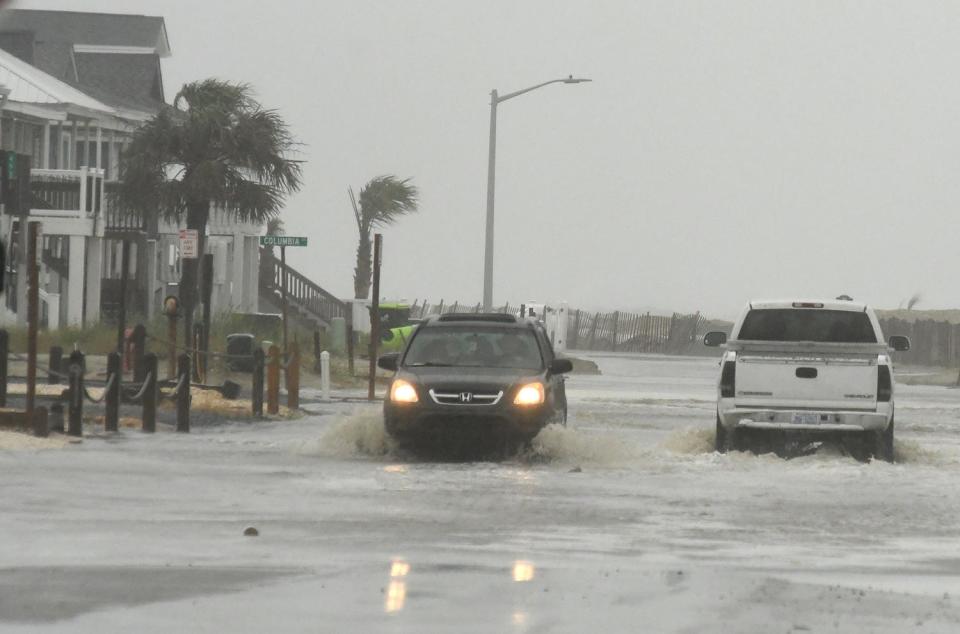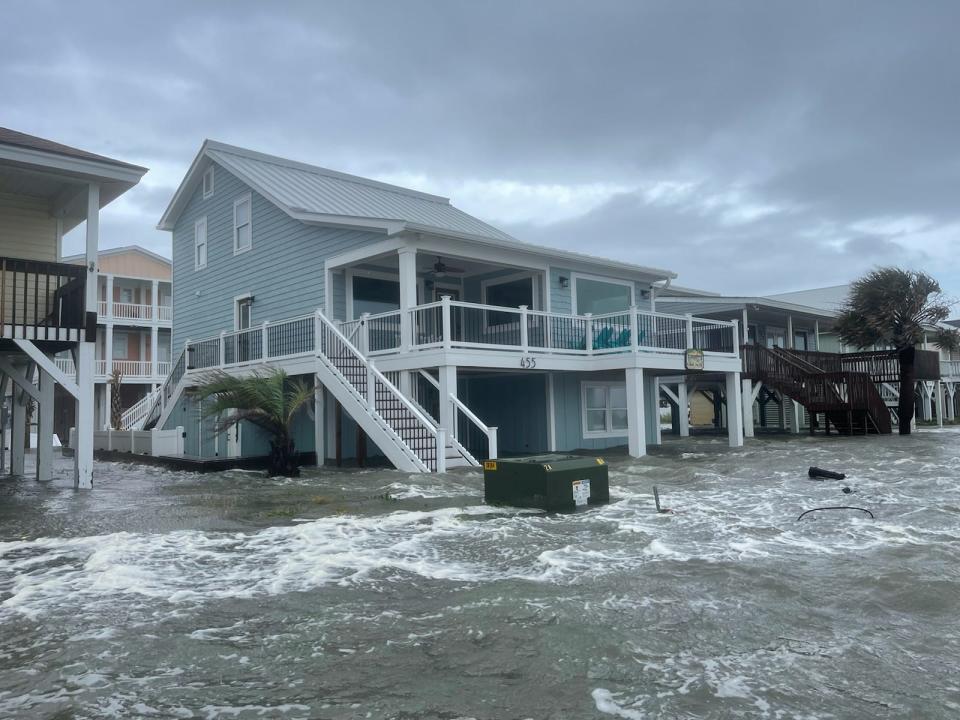Hurricane Ian floods Ocean Isle Beach, including homes mired in statewide debate
Homes at the far eastern end of Ocean Isle Beach were partially submerged as Hurricane Ian made landfall in the Carolinas Friday, including one home that has grown to symbolize a growing debate among oceanfront homeowners in North Carolina.
Hurricane Ian, currently a Category 1 hurricane, made landfall in South Carolina. Its rain, wind and storm surge were felt up and down the coast, including in Ocean Isle Beach, a small beachfront barrier island located near the North Carolina-South Carolina border.
“All the canals have breached pretty much by about a foot or two, so most of the houses down here, the bottom floors are underwater,” said David Hill. “The roads have a couple feet of water in them. You can’t tell the canals from the driveways from the roads."
Hill owns a house perched at the very eastern end of Ocean Isle Beach. Affectionately called Pelican Point by its previous owners, Hill’s home has faced the constant threat of being swallowed up by the rising waters of the Atlantic Ocean for decades, yet its owners have refused to give up on the house.

When Pelican Point was first built in the 1970s, hundreds of feet of beachfront separated it from the ocean. Decades of rising seas shrank the beach, putting Hill’s home at risk of getting washed away. Despite steps taken to protect the home by Hill, and the town of Ocean Isle Beach, Ian’s wrath submerged Pelican Point yet again.
Pelican Point’s story, and that of its former owners, were chronicled in a recent USA TODAY Network national climate change project called “Perilous Course.” Bill and Glenda Browning, who sold Pelican Point to Hill, fought for three years to preserve the home as storms and sea level rise threatened its existence.
The couple’s struggle to survive at a home located so perilously close to the ocean, and their difficulty parting with Pelican Point, embodies a growing problem playing out across coastal North Carolina. Sea level rise is forcing more homeowners, and entire communities, to reexamine their proximity to the water. Some communities can't stop sea level rise, but the thought of leaving is too difficult for some.

'Perilous Course':The climate future is now. Humans navigate a ‘Perilous Course’ on the East Coast.
Ultimately, the Brownings chose to sell Pelican Point to Hill in 2020. Since then, the town of Ocean Isle Beach constructed a terminal groin, a jetty-like structure, in front of Pelican Point to protect the homes at the eastern end of the island. Ian is the first hurricane to strike since construction of the groin was completed in March.
Ian’s storm surge washed away the beach in front of Pelican Point and flooded the terminal groin, according to Hill and eyewitness accounts. Waves are breaking over the protective wall of sandbags Hill has around Pelican Point to protect the house, he said.
Despite Ian, Hill is unfazed, thanks in part to the town’s terminal groin, he said.
The home itself is fine, and the streets around it are submerged by approximately two feet of water, but the entire situation would’ve been much worse if the town didn’t build the terminal groin, Hill said.
“The water would probably be over my head without the groin. Instead, it’s around my knees,” Hill said. “The house at the very end, those houses probably wouldn’t be here after this storm if it wasn’t for that terminal groin.”
More:Live updates on Ian: Tornado watch issued, Sunset Beach bridge closing
This article originally appeared on Wilmington StarNews: Hurricane Ian floods Ocean Isle, including homes at center of NC debate

